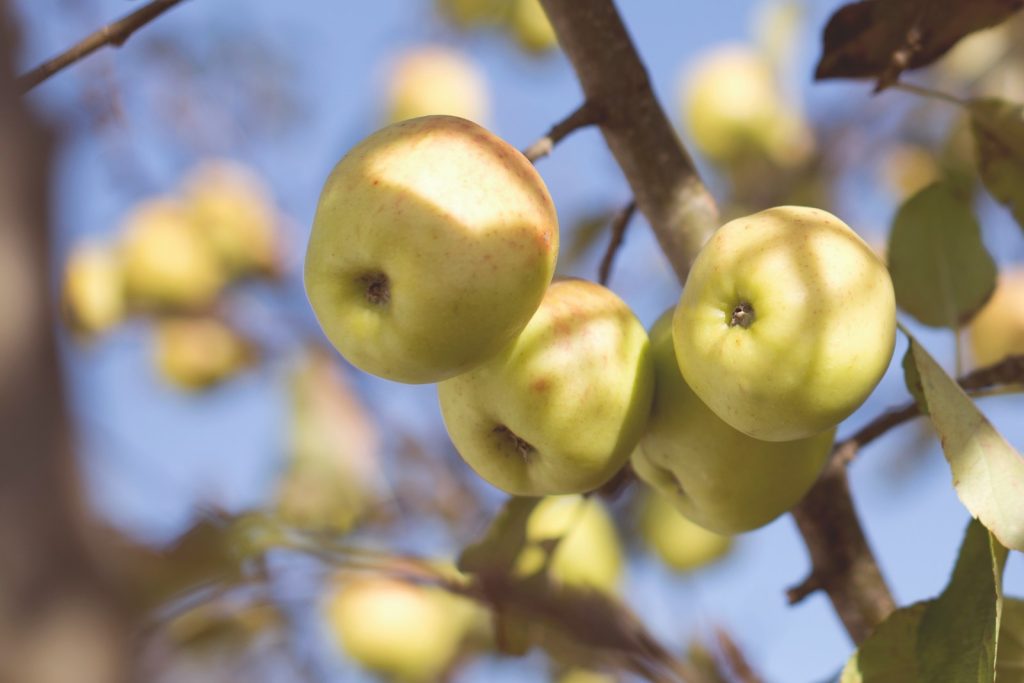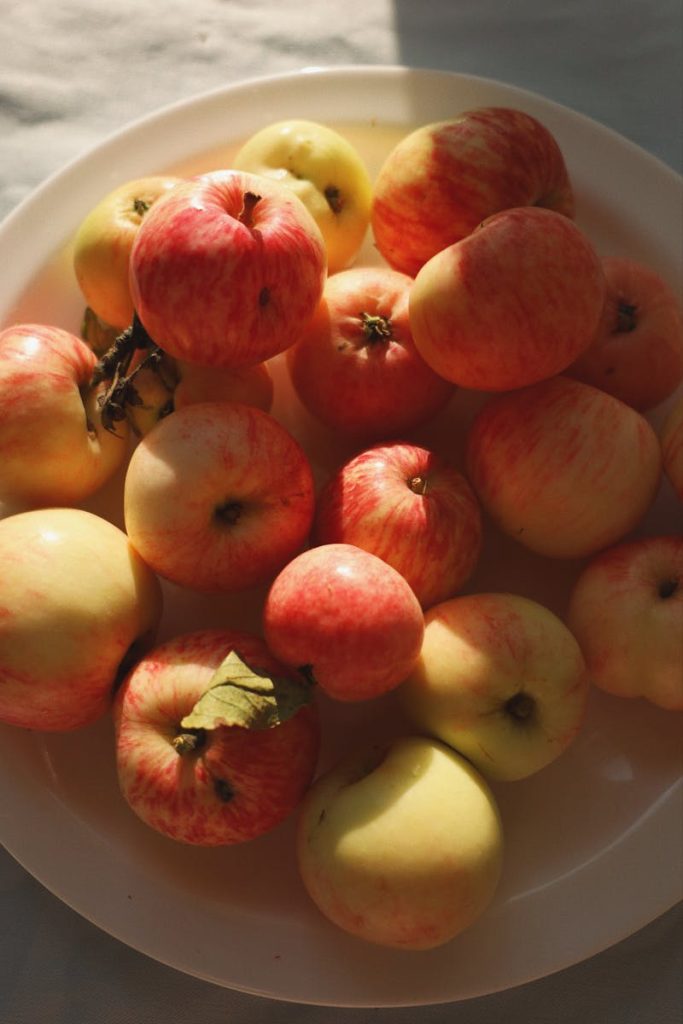Imagine yourself strolling through an apple orchard on a crisp autumn day, the air filled with the intoxicating aroma of ripe apples. As you reach out to pluck a fresh apple from the tree, a thought crosses your mind – what if this perfectly sweet and juicy apple could be transformed into a deliciously refreshing beverage? This is where the story of sweet cider begins. In this article, we will explore the fascinating history and irresistible appeal of sweet ciders, uncovering the secrets behind their everlasting popularity. So sit back, relax, and prepare to embark on a journey through the sweet and enchanting world of cider.
The History of Sweet Cider
Sweet cider has a rich history that dates back centuries. From its origins in Europe to its journey to America, sweet cider has evolved into a beloved beverage enjoyed by many. Understanding its historical roots is important to appreciate sweet cider truly.
The Origins of Cider Making
The tradition of making cider can be traced back to ancient times. The ancient Romans and Greeks were known to produce and savor this delightful beverage. They cultivated apples specifically for cider making and developed various techniques to extract the juice from the apples. As the Roman Empire grew, so did the popularity of cider making, spreading throughout Europe.
The Rise of Sweet Ciders in Europe
During the Middle Ages, sweet ciders gained popularity in Europe. Monasteries and orchards dedicated to cider production emerged, with monks refining the art of cider making and experimenting with different apple varieties. Sweet ciders became an integral part of European culture and were enjoyed by people from all walks of life.
Cider in America – From Colonial Times to Prohibition
Cider making made its way to the Americas through European settlers. In colonial America, cider was consumed daily by both adults and children, making it a staple beverage. However, with the advent of beer production and the temperance movement, cider experienced a decline during the prohibition era. Yet, sweet ciders persisted, and with the recent resurgence of craft cider, they have regained their popularity in America.
Sweet vs Dry Ciders
When it comes to cider, one of the fundamental distinctions is whether it is sweet or dry. Understanding the differences between these two types of cider is essential in order to appreciate the unique qualities of sweet ciders.
Defining Sweet Ciders
Sweet ciders are distinguished by their higher sugar content, resulting in a more pronounced sweetness. This sweetness can be derived from the natural sugars present in the apples themselves, or by the addition of sweeteners such as honey or maple syrup during the fermentation process. The balance of sweetness and acidity in sweet ciders creates a refreshing and enjoyable drinking experience.
The Perceived Sweetness Scale
Sweetness in cider is often subjective and can vary depending on personal taste preferences. However, there is a perceived sweetness scale that can serve as a general guide. This scale ranges from bone dry to dessert sweet, with sweet ciders falling towards the sweeter end. It is important to note that not all sweet ciders have the same level of sweetness, allowing for a diverse range of flavors to cater to different palates. Let’s now go over the scale in more detail.
Understanding the Sweetness Scale of Cider
When it comes to cider, sweetness is one of the key characteristics that defines the drink’s flavor profile and overall appeal. The sweetness scale is a helpful guide for cider enthusiasts to understand the varying levels of sugar content in their beverage, which can range from bone-dry to delightfully sweet. Here’s a closer look at the sweetness scale for hard ciders:
- Dry Ciders
On the lower end of the sweetness scale are dry ciders. These ciders contain little to no residual sugar, as most of the natural sugars from the apples are fermented into alcohol. Dry ciders are known for their crisp, clean taste and are often likened to dry wines or brut-style sparkling wines. If you prefer a tart, refreshing drink with minimal sweetness, dry ciders are the way to go. - Semi-Dry Ciders
Moving up the scale, semi-dry ciders strike a balance between dryness and sweetness. They have a slight hint of sweetness, enough to soften the tartness without overwhelming the palate. Semi-dry ciders are versatile and appeal to a broad audience, offering a refreshing taste with a touch of natural apple flavor. - Semi-Sweet Ciders
For those who enjoy a bit more sweetness, semi-sweet ciders offer a noticeable sugar content that enhances the fruit flavors. These ciders are more balanced, with the sweetness complementing the acidity of the apples. Semi-sweet ciders are often enjoyed by those who appreciate a sweeter taste but still want a drink that remains refreshing and not overly sugary. - Sweet Ciders
At the top of the sweetness scale are sweet ciders, which have the highest level of residual sugar. These ciders are often described as dessert-like, with a rich and fruity flavor that can be enjoyed on its own or paired with sweet treats. Sweet ciders are ideal for those who love a sugary finish and a pronounced apple taste.
This sweetness scale not only helps consumers select the cider that best suits their taste preferences but also allows cider makers to craft beverages that cater to a wide range of palates. Whether you prefer your cider dry and crisp or sweet and luscious, understanding the sweetness scale can enhance your appreciation for this versatile drink.
Regional Preferences for Sweet Ciders
Regional preferences for sweet ciders vary across the globe. In some countries, such as England and Germany, sweet ciders are deeply rooted in their culinary traditions and are widely enjoyed. In contrast, other regions, like France, have a preference for drier cider varieties. These regional variations contribute to the diverse and vibrant world of sweet ciders.
The Production Process
The production of sweet cider is a labor-intensive and intricate process that involves several stages. From apple selection to maturation and bottling, each step contributes to the final flavor profile of the cider.
Apple Selection and Harvesting
When making sweet hard cider, the choice of apple varieties is crucial in achieving the desired level of sweetness and complexity. Sweet ciders typically benefit from apples that have a good balance of natural sugars and acidity, as well as those that contribute rich, fruity flavors. Here are some of the best apple types for making sweet hard cider:
1. Golden Delicious
- Flavor Profile: Golden Delicious apples are known for their sweet, mild flavor and juicy flesh. They have a high sugar content, making them an excellent choice for sweet ciders.
- Cider Characteristics: Adds a smooth, sweet taste with a golden hue. It’s often used as a base apple in blends for its reliable sweetness.
2. Gala
- Flavor Profile: Gala apples offer a mild, sweet flavor with a hint of floral notes. Their firm texture and juicy sweetness make them a popular choice for sweet cider production.
- Cider Characteristics: Provides a balanced sweetness with a crisp finish, ideal for those who prefer a lighter, more refreshing sweet cider.
3. Fuji
- Flavor Profile: Fuji apples are renowned for their intense sweetness and low acidity. They have a firm, crisp texture and are one of the sweetest apple varieties available.
- Cider Characteristics: Fuji apples contribute a rich, sweet flavor that can stand alone or blend well with other varieties to enhance the overall sweetness.
4. Honeycrisp
- Flavor Profile: As the name suggests, Honeycrisp apples are known for their honey-like sweetness and crisp texture. They are highly aromatic and offer a balanced sweetness with a touch of acidity.
- Cider Characteristics: Produces a sweet cider with a bright, fruity aroma and a clean, refreshing finish. It’s ideal for those who enjoy a sweet but not overly cloying cider.
5. Jonagold
- Flavor Profile: Jonagold apples are a cross between Golden Delicious and Jonathan apples. They offer a balanced blend of sweetness and tartness, with a rich, honeyed flavor.
- Cider Characteristics: Adds complexity to sweet ciders with its balance of sweet and tart flavors, making for a more layered and interesting drink.
6. Cortland
- Flavor Profile: Cortland apples have a sweet-tart flavor with a hint of berry-like notes. They are juicy and have a softer texture.
- Cider Characteristics: It provides a sweet, fruity base for cider with a slight tart edge, making it a good choice for those who prefer a bit of complexity in their sweet cider.
7. McIntosh
- Flavor Profile: McIntosh apples are aromatic with a tender texture and a balance of sweetness and tartness. They are known for their distinctive, vinous flavor.
- Cider Characteristics: Adds a fragrant sweetness to cider, often resulting in a softer, smoother finish. It pairs well with other sweet apples for a more rounded flavor profile.
8. Pink Lady (Cripps Pink)
- Flavor Profile: Pink Lady apples are known for their sweet-tart flavor with a crisp bite. They have a higher acidity level but still offer plenty of sweetness.
- Cider Characteristics: Creates a sweet cider with a lively, refreshing character, perfect for those who like a bit of zing in their sweet cider.
9. Red Delicious
- Flavor Profile: Red Delicious apples are sweet with a mild flavor and low acidity. While not as complex as other varieties, they contribute a straightforward sweetness to cider.
- Cider Characteristics: Provides a smooth, sweet flavor, though it’s often best used in blends with more complex apples to avoid a one-dimensional taste.
10. Braeburn
- Flavor Profile: Braeburn apples offer a harmonious balance of sweetness and tartness, with hints of spice. They are firm and juicy, with a well-rounded flavor.
- Cider Characteristics: Adds depth to sweet ciders with its spicy-sweet profile, making it a versatile apple for blending or single-varietal ciders.
Blending for Sweet Ciders and Adding Sweeteners
Many cidermakers prefer to blend different apple varieties to achieve the perfect balance of sweetness, acidity, and complexity. Using a combination of sweet apples like Golden Delicious and Fuji with more complex varieties like Jonagold or Braeburn can result in a cider that is sweet but also layered with different flavors.
Choosing the right apples is essential in crafting a sweet hard cider that is enjoyable and satisfying. Whether you prefer a straightforward sweet cider or one with a bit more complexity, these apple varieties offer the ideal foundation for creating the perfect sweet sip. Additionally, the addition of sweeteners such as honey, maple syrup, or even fruit juices can enhance the sweetness and complexity of the cider, creating a delightful drinking experience.
Pressing and Juicing Techniques
Once the apples are harvested, they need to be pressed to extract the juice. Traditionally, cider apples were ground to a pulp and pressed using a cider press. Nowadays, modern techniques such as hydraulic presses are often used to extract the juice efficiently. Careful attention is paid to ensure the juice is extracted without any bitterness from the apple seeds or skins.
Fermentation and Sweetness Control
The journey from apple juice to hard cider begins with fermentation, a natural process where yeast consumes the sugars in the juice and converts them into alcohol. In traditional dry ciders, fermentation is allowed to continue until most, if not all, of the sugars are fully converted, resulting in a crisp, low-sugar beverage. However, for sweet ciders, the process takes a different turn.
Halting Fermentation for Sweetness
To retain the desired sweetness, cider makers strategically halt the fermentation process before all the sugars are converted into alcohol. This can be achieved through various methods, including chilling the cider to slow down yeast activity or filtering out the yeast. By stopping fermentation early, cider makers can leave a specific amount of residual sugar in the cider, giving it the characteristic sweetness that many people enjoy.
The Role of Potassium Sorbate
A crucial tool in controlling the fermentation process and maintaining sweetness is the use of potassium sorbate. Potassium sorbate is a food-grade preservative that inhibits yeast activity and prevents further fermentation. By adding potassium sorbate, cider makers can effectively stop any remaining yeast from consuming the residual sugars. This ensures that the cider retains its sweetness and doesn’t accidentally ferment further, which could increase alcohol content or reduce sweetness.
Stabilizing the Cider
Potassium sorbate is especially important when bottling the cider, as it prevents secondary fermentation in the bottle, which can lead to over-carbonation or spoilage. Often used in combination with sulfites (like potassium metabisulfite), potassium sorbate also helps stabilize the cider by protecting it from spoilage and oxidation, ensuring a consistent and enjoyable product.
Crafting the Perfect Sweet Cider
This careful control over fermentation and stabilization allows cider makers to fine-tune the sweetness level, crafting a cider that meets specific taste preferences. Ultimately, the use of potassium sorbate and other fermentation control methods enables cider makers to create sweet ciders that are both delicious and stable. This balance between science and art is what allows sweet cider to maintain its appeal, offering a reliable sweetness and flavor that consumers love.
Maturation and Bottling
After fermentation, the cider is typically aged to allow for the development of complex flavors. The cider may be aged in stainless steel tanks, oak barrels, or a combination of both. Once the desired flavors have been attained, the cider is carefully bottled and ready to be enjoyed.
Flavor Profiles of Sweet Ciders
Sweet ciders offer a wide range of flavors and complexities, influenced by the apples used and the techniques employed during production.
Apples and Their Impact on Flavor
The choice of apples plays a crucial role in shaping the flavor profile of sweet ciders. Sweet apples contribute to the overall sweetness, while tart or bittersweet apples provide acidity and depth. The careful blending of different apple varieties allows for a harmonious balance of flavors, resulting in a distinctive taste.
Secondary Flavor Infusions
To further elevate the flavors, cider makers may experiment with secondary infusions. These infusions can include adding spices, herbs, or even fruit into the cider during the maturation process. These additions impart additional layers of complexity and aromatics, making each sip a unique and enjoyable experience.
Pairing Sweet Ciders with Food
Sweet ciders are not only a delightful beverage on their own but also an excellent companion to a variety of dishes. Their inherent sweetness and acidity make them a versatile choice when it comes to food pairing.
Complementary Pairings – Sweet Meets Savory
The sweetness of a cider can complement savory dishes, providing a pleasing contrast. Rich and hearty dishes, such as roasted meats or stews, are well-balanced by the sweetness of the cider. The acidity cuts through the richness, creating a harmonious pairing that enhances both the flavors of the cider and the food.
Cheese and Sweet Ciders – A Perfect Match
Cheese and sweet ciders form a classic pairing that showcases the complexity of both elements. The creamy and savory nature of cheeses pairs wonderfully with the sweetness and acidity of the cider. From tangy goat cheese to creamy brie, there is a perfect cheese to match every sweet cider.
Dessert Pairings – Taking Sweetness to New Heights
Sweet ciders can be a delightful accompaniment to desserts. The natural sweetness of the cider can enhance the flavors of sweet treats, such as apple pie or caramel-based desserts. The balance of sweetness and acidity in the cider ensures that the pairing isn’t overly cloying, providing a well-rounded finish to the meal.
Health Benefits of Sweet Ciders
In addition to their delightful taste, sweet ciders offer several potential health benefits.
Nutritional Value of Apples
Apples, the primary ingredient in cider, are packed with essential vitamins, minerals, and fiber. This nutritional profile contributes to overall health and well-being. Consuming sweet ciders can be a tasty way to incorporate these benefits into your diet.
Antioxidants and Polyphenols
Apples are rich in antioxidants and polyphenols, which are thought to have numerous health benefits, including reducing the risk of chronic diseases. The fermentation process of sweet ciders can also enhance the bioavailability of these compounds, making them more accessible to the body.
Potential Digestive Benefits
Sweet ciders can have a positive impact on digestion due to their natural acidity. The acid content may aid in stimulating digestive enzymes, promoting a healthy gut. However, it is important to consume sweet ciders in moderation, as excessive consumption can lead to digestive discomfort.
Exploring Different Varieties of Sweet Ciders
Sweet ciders come in a wide array of varieties, each with its unique characteristics and regional influences.
Traditional English Sweet Ciders
England has a long-standing tradition of cider making, and traditional English sweet ciders hold a special place in the cider world. The West Country and East Anglia regions are known for their distinct cider styles, each offering its own interpretation of sweetness and flavor.
French-style Cidre Doux
France is famous for its cider production, and sweet ciders, known as Cidre Doux, are an integral part of French culinary culture. These ciders are known for their delicate sweetness and subtle complexities, making them a true delight for the senses.
North American Sweet Ciders
In North America, sweet ciders have experienced a resurgence in popularity. Craft cider makers are experimenting with different apple varieties and techniques to create unique and flavorful sweet ciders. These ciders often highlight the diverse qualities of North American apple varieties.
Innovative Sweet Cider Creations
As the craft cider movement continues to grow, cider makers are pushing the boundaries of traditional sweet ciders. They are incorporating innovative ingredients, such as hops or fruits, to create exciting and unexpected flavor combinations that challenge traditional notions of what a sweet cider can be.
Sweet Ciders Around the World
Sweet ciders have a global presence and are celebrated in various countries for their unique characteristics and regional influences.
English Sweet Ciders: West Country vs East Anglia
England is renowned for its cider production, and the country is divided into distinct cider regions. The West Country, with its traditional farmhouse ciders, and East Anglia, known for its sharp and sweet blends, each offer a different take on sweet ciders, giving cider enthusiasts a wide range of options to explore.
Spanish Sidra – A Sweet Affair
Spain’s cider tradition is deeply rooted in its culture, with sweet ciders, known as Sidra, being enjoyed in many regions. Spaniards have perfected the art of pouring sidra from great heights, enhancing the cider’s effervescence. These sweet ciders are often paired with traditional Spanish cuisine, adding a delightful touch to the dining experience.
German Süßmost – Embracing Sweetness
Germany is known for its beer, but it also has a well-established cider culture. Sweet ciders, known as Süßmost, have gained popularity in recent years. These ciders embrace the natural sweetness of the apples, resulting in a delightful beverage that is enjoyed throughout the country.
Sweet Ciders in the New World
In countries outside of Europe, sweet ciders are also making their mark. From Australia to Canada to New Zealand, cider makers are embracing the sweetness and crafting unique interpretations of this beloved beverage. These new-world sweet ciders offer their own flavor profiles and regional influences, adding to the global cider tapestry.
The Current Sweet Cider Revival
As the cider industry has experienced a resurgence in recent years, sweet ciders have been at the forefront of this revival.
Sweet Ciders on the Rise
The demand for sweet ciders has been steadily increasing as more consumers discover and appreciate the unique flavors they offer. Craft cider makers are responding to this demand by producing a wide variety of high-quality sweet ciders that cater to different taste preferences.
The Craft Cider Movement
The craft cider movement has played a significant role in the resurgence of sweet ciders. Small-scale cider makers are dedicated to using traditional techniques and locally sourced ingredients to produce exceptional sweet ciders. This attention to quality and craftsmanship has elevated sweet ciders to a new level of appreciation.
Sweet Ciders at Festivals and Tastings
Festivals and tastings dedicated to cider have become popular events around the world. These gatherings offer cider enthusiasts the opportunity to explore and sample a wide range of sweet ciders. From traditional to innovative, attendees can experience the diverse flavors and learn about the history and production behind each sip.
Conclusion
The history and appeal of sweet cider are undeniable. From its ancient origins to the present day, sweet cider has evolved and captured the hearts and palates of people around the world. Its unique flavor profiles, health benefits, and versatility in food pairings continue to make sweet cider a beloved beverage for any occasion. So whether you prefer a traditional English sweet cider or an innovative creation from a local craft cider maker, take a moment to savor the sweetness and appreciate the rich history that has shaped this delightful beverage. Cheers to sweet cider!
© 2024 by brewandbeyond.com. All rights reserved. No part of this document may be reproduced or transmitted in any form or by any means, electronic, mechanical, photocopying, recording, or otherwise, without prior written permission of brewandbeyond.com.




